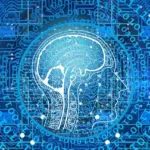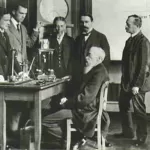Introduction
Language and communication are quintessential aspects of human existence. They allow us to express our thoughts, emotions, and ideas, creating a shared understanding among individuals. In this blog post, we will delve into the properties, structure, and linguistic hierarchy of human language. We will also explore language acquisition and theories of language development proposed by Skinner and Chomsky. Finally, we will touch upon the process and types of communication, emphasizing the significance of effective communication training.
Properties, Structure, and Linguistic Hierarchy of Human Language
Human language possesses several unique properties that distinguish it from other forms of communication. Firstly, language is symbolic, meaning that words and signs represent specific concepts or objects. This symbolic nature allows us to convey abstract ideas and discuss events that are not immediately present.
Furthermore, human language is arbitrary, as there is no inherent connection between the words we use and their meanings. This arbitrariness grants us the flexibility to create new words and adapt our language to changing circumstances.
Language also demonstrates structure and hierarchy. At the basic level, language consists of phonemes, which are the smallest units of sound that convey meaning. These phonemes are combined to form morphemes, the smallest meaningful units of language such as words, prefixes, and suffixes. Morphemes, in turn, combine to form phrases, sentences, and ultimately, coherent discourse.
Linguistic hierarchy refers to the organization of language into levels of increasing complexity. From phonemes to sentences, each level contributes to the overall structure and understanding of language. This hierarchical organization allows us to comprehend and produce language in a systematic manner.
Language Acquisition: Predisposition and Critical Period Hypothesis
Language acquisition refers to the process through which individuals learn their first language. While language acquisition may seem effortless during childhood, researchers have uncovered fascinating insights into this intricate process.
One prominent theory is the predisposition theory, which suggests that humans possess an innate predisposition or genetic capacity for acquiring language. This theory implies that we are biologically wired to acquire language, explaining why young children effortlessly absorb their native language without formal instruction.
Additionally, the critical period hypothesis proposes that there is a specific window of opportunity for language acquisition. This hypothesis suggests that the ability to acquire language gradually diminishes after a certain age, with early childhood being the critical period. Although the exact duration of this period remains debated, it highlights the importance of early exposure to language for optimal language development.
Theories of Language Development: Skinner and Chomsky
Behaviorist psychologist B.F. Skinner proposed a theory of language development known as behaviorism. Skinner believed that language acquisition is primarily influenced by environmental factors and reinforcement. According to this theory, children learn language through imitation, reinforcement, and conditioning. However, behaviorism fails to explain how children generate novel sentences or understand complex grammatical structures.
Linguist Noam Chomsky, on the other hand, proposed the theory of universal grammar and transformational-generative grammar. Chomsky argued that language acquisition is guided by innate linguistic structures and principles. He posited that children are born with a set of language acquisition devices (LAD), allowing them to acquire language rapidly and generate novel sentences. Chomsky’s theory revolutionized our understanding of language development and emphasized the role of innate abilities in the acquisition process.
Process and Types of Communication: Effective Communication Training
Communication is a fundamental aspect of human interaction, encompassing various modes and methods. The process of communication involves encoding and decoding messages, which can be transmitted verbally or nonverbally.
Verbal communication involves the use of spoken or written language to convey information. It relies on the proper selection and arrangement of words, grammar, and syntax to ensure clarity and comprehension. Nonverbal communication, on the other hand, involves gestures, body language, facial expressions, and tone of voice, which complement and enrich the verbal message.
Effective communication training plays a vital role in fostering productive interpersonal relationships and professional success. It involves developing skills such as active listening, empathy, clarity of expression, and conflict resolution. Through training programs, individuals can enhance their communication abilities, enabling them to convey their thoughts effectively, understand others, and build meaningful connections.
Conclusion
Language and communication are fundamental to human existence, facilitating the exchange of ideas, emotions, and information. The properties, structure, and linguistic hierarchy of language provide a framework for understanding its complexity. Language acquisition theories proposed by Skinner and Chomsky shed light on how we acquire language and the innate mechanisms behind this process. Finally, effective communication training empowers individuals to engage in meaningful and impactful interactions. By continuously honing our language skills and fostering effective communication, we can build bridges of understanding and cooperation in an ever-evolving world.







